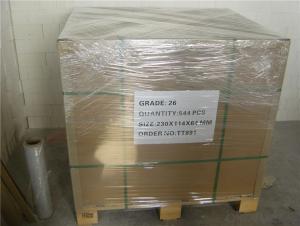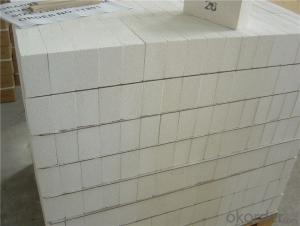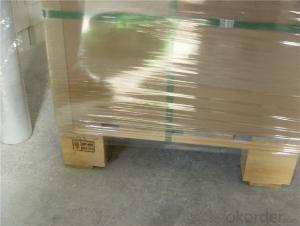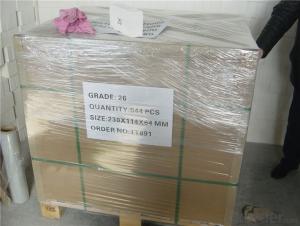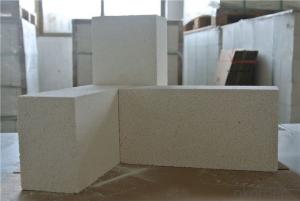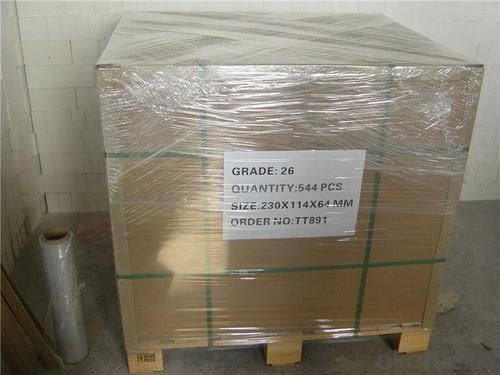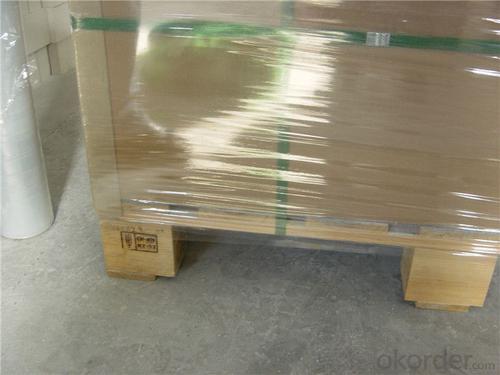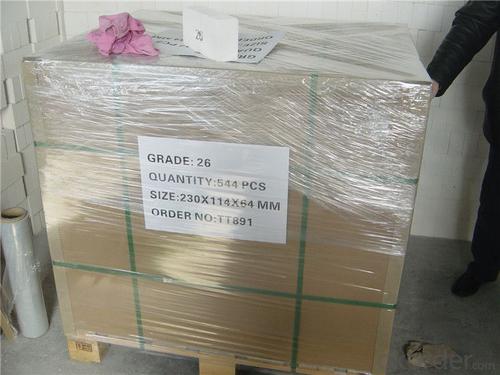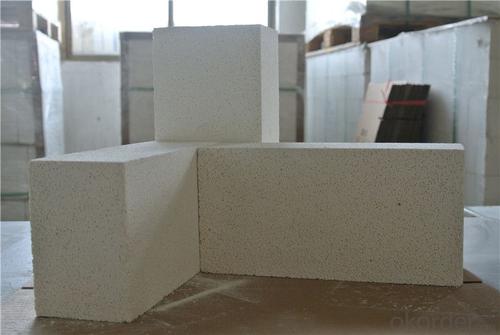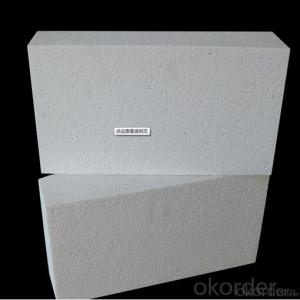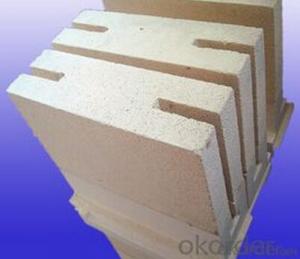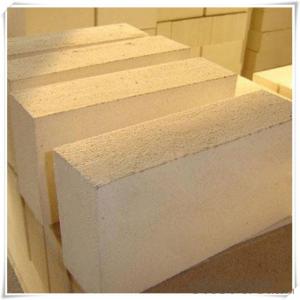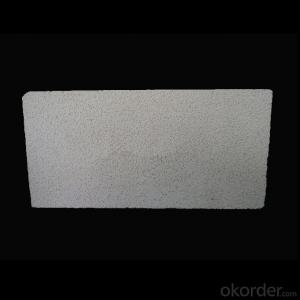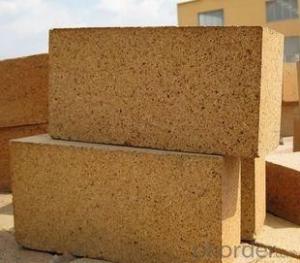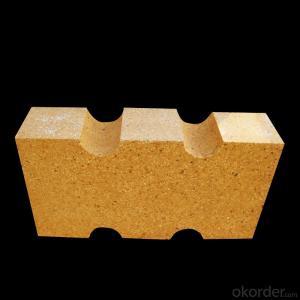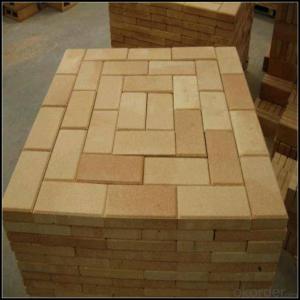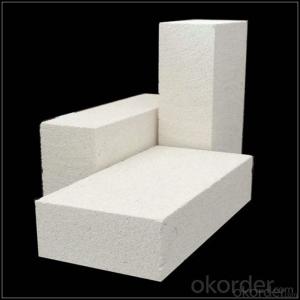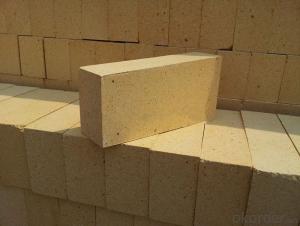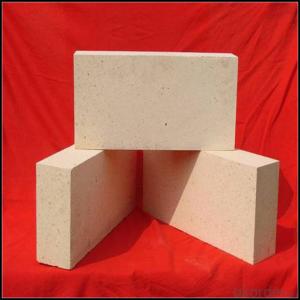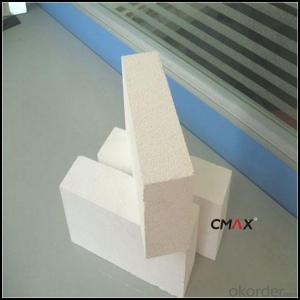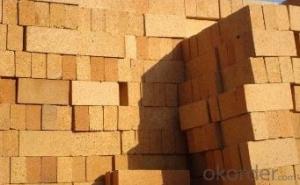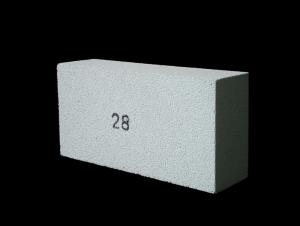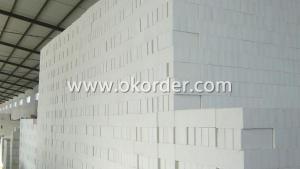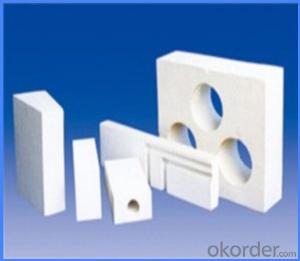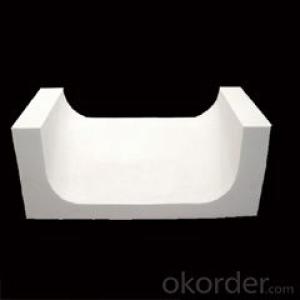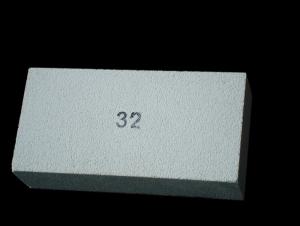Standard Size Refractory Fire Clay Insulation Brick For Tunnel Kiln
- Loading Port:
- Shanghai
- Payment Terms:
- TT OR LC
- Min Order Qty:
- 1 m.t.
- Supply Capability:
- 1000 m.t./month
OKorder Service Pledge
OKorder Financial Service
You Might Also Like
Thermal Insulation Fire Clay Brick
Refractory brick is a block of refractory ceramic material used in lining furnaces, kilns, fireboxes, and fireplaces.
We provide high quality Refractory Fire Bricks that are used on wide range in the various industries like Cement, Glass and Steel. Refractory Fire Bricks are provided as per the quantity and specifications required by the customers. We provide an extensive range of Refractory Fire Bricks at reasonable prices that depend upon the quantity ordered.
Application
Insulating Fire Brick are used for the lining of converter, alternating current arc furnace, direct Current arc furnace and the ladle slag line, etc.
Company Advantage
(1)Long Insulating Fire Brick manufacture history: 25 years manufacturer
(2)Advanced equipment
(3)Diversification of production standards: ISO ANSI FEPA JIS ASTM
(4)Flexible payment: T/T L/C D/P D/A
(5)Professional marketing team and after-sale service
Insulating Fire Brick main feature:
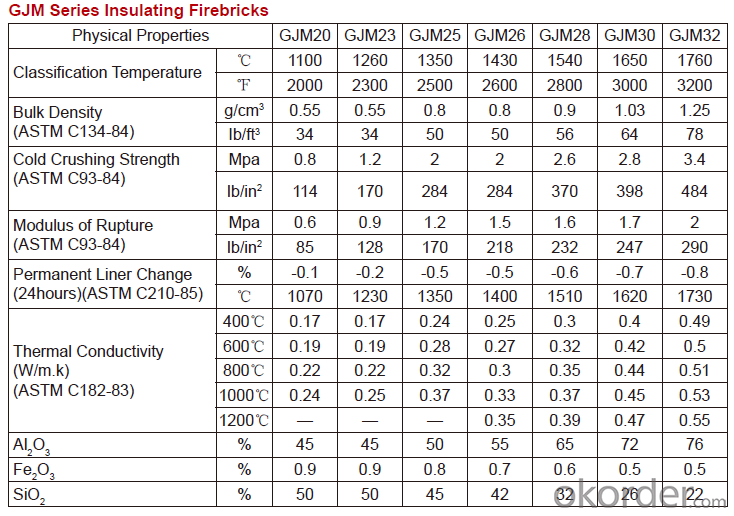
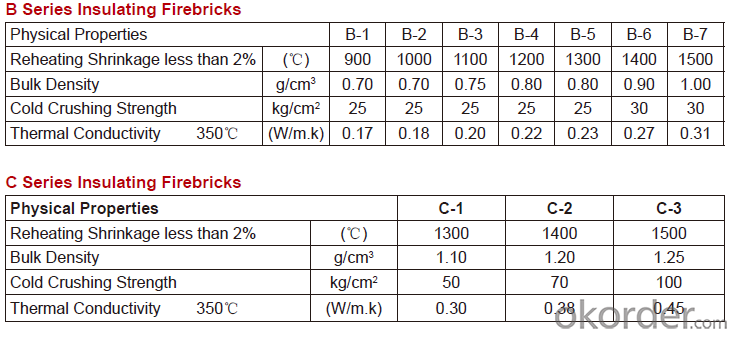
Equipment
1 unit of Ceramic Abrasive (SG Abrasive) pilot production line
2 units of Compact grain Abrasive pilot production lines
1 unit of high-end coated abrasives (abrasive cloth) production line
2 units of Boron Carbide production lines
3 large flexible crushing and sieving lines for grit production lines
6 units of 5000KVA-10000KVA dumping type electric arc furnaces for Brown Fused Alumina fusion
Q1 What’s the transport method?
A1 FCL delivery goods with wooden pallet or wooden case by sea; If LCL delivery, must with wooden case; Sometimes need open top, flat rack or bulk cargo.
Q2 What’s the required payment term?
A2 Generally 30% TT as the prepayment, 70% TT before delivery. If need, 100% Irrevocable Letter of Credit or negotiation.
Q3 Which country are our products exported to?
A3 Apart from entire Chinese market, the US, Russia, Japan, Korea, Australia and some Southeast Asian Nations.
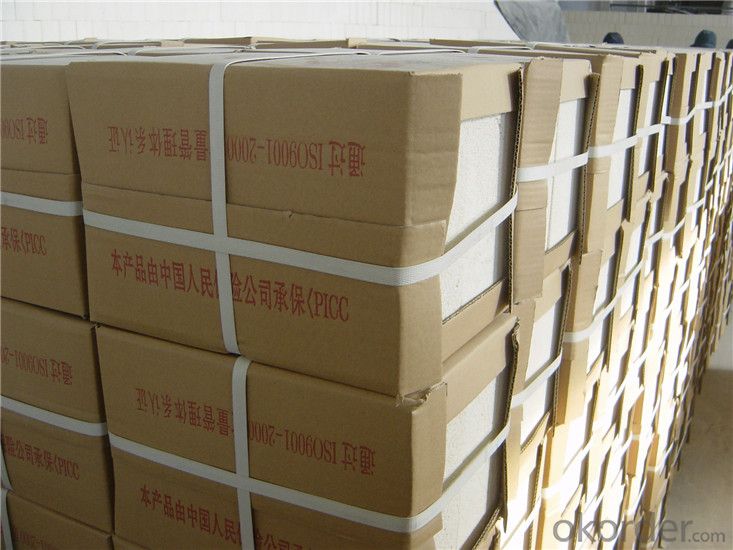
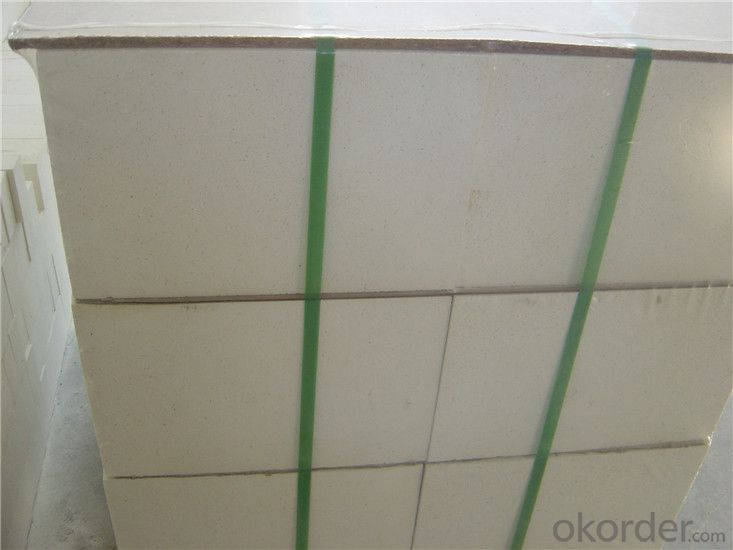
- Q: Are insulating fire bricks resistant to carbon monoxide attack?
- Yes, insulating fire bricks are generally resistant to carbon monoxide attack. Insulating fire bricks are made from materials that have a high resistance to high temperatures and chemical corrosion, including carbon monoxide. These bricks are often used in applications where high temperatures and exposure to various gases, including carbon monoxide, are common, such as in furnaces, kilns, and fireplaces. The composition of insulating fire bricks allows them to withstand prolonged exposure to carbon monoxide without deteriorating or reacting with the gas. However, it is important to note that prolonged exposure to extremely high levels of carbon monoxide can eventually cause damage to any material, including insulating fire bricks. Therefore, it is still necessary to ensure proper ventilation and safety measures when dealing with carbon monoxide in any setting.
- Q: Can insulating fire bricks be used in the construction of smelters or foundries?
- Yes, insulating fire bricks can be used in the construction of smelters or foundries. Insulating fire bricks have excellent thermal insulation properties and can withstand high temperatures, making them suitable for lining the walls and floors of smelters or foundries. They help to retain heat, improve energy efficiency, and protect the surrounding structures from extreme temperatures.
- Q: Can insulating fire bricks be used in the construction of pottery ovens?
- Yes, insulating fire bricks can be used in the construction of pottery ovens. Insulating fire bricks are specifically designed to have excellent thermal properties, such as low thermal conductivity and high resistance to heat. These qualities make them ideal for insulating and retaining heat in pottery ovens, allowing for more efficient and controlled firing of clay and ceramic materials. Additionally, insulating fire bricks are lightweight, which makes them easier to handle and install in the construction process. Overall, the use of insulating fire bricks in pottery ovens helps to create a consistent and even distribution of heat, resulting in improved firing outcomes and energy efficiency.
- Q: Are insulating fire bricks fireproof?
- Indeed, insulating fire bricks possess fireproof properties. Their design allows them to endure elevated temperatures while offering insulation to impede heat transfer. Composed of refractory materials with a high melting point, insulating fire bricks can withstand intense heat without disintegrating or liquefying. These bricks are frequently employed in scenarios involving high temperatures, such as kilns, furnaces, fireplaces, and ovens. As a means of fireproofing, insulating fire bricks are highly recommended due to their exceptional thermal insulation capabilities and their ability to effectively safeguard against the propagation of fire.
- Q: Can insulating fire bricks be used in the construction of hot air generators?
- Yes, insulating fire bricks can be used in the construction of hot air generators. Insulating fire bricks are designed to withstand high temperatures and provide excellent thermal insulation. Their ability to retain heat makes them ideal for use in hot air generators, as they help to minimize heat loss and improve energy efficiency.
- Q: Are insulating fire bricks suitable for insulation in power boilers?
- Yes, insulating fire bricks are suitable for insulation in power boilers. They have excellent thermal conductivity and can withstand high temperatures, making them effective in reducing heat loss and improving energy efficiency in power boilers. Additionally, their insulating properties help to maintain a consistent temperature within the boiler, enhancing its overall performance and reliability.
- Q: Can insulating fire bricks be used for insulation in oil refineries?
- Indeed, insulating fire bricks are a suitable choice for insulation in oil refineries. These bricks are specifically engineered to endure extreme temperatures and offer exceptional thermal insulation. Crafted from lightweight refractory materials with minimal thermal conductivity, they effectively curtail heat transfer. Consequently, insulating fire bricks find utility in insulating diverse refinery elements such as furnaces, reactors, and pipelines, where elevated temperatures and heat transfer prevail. By incorporating these bricks, oil refineries can substantially diminish heat loss, thereby enhancing energy efficiency and trimming operational expenses.
- Q: Can insulating fire bricks be used in blast furnaces?
- Yes, insulating fire bricks can be used in blast furnaces. Insulating fire bricks are designed to withstand high temperatures and provide excellent thermal insulation. Blast furnaces operate at extremely high temperatures, typically around 1500°C (2732°F), and require materials that can withstand these harsh conditions. Insulating fire bricks are made from lightweight materials such as ceramic fibers, which have low thermal conductivity and can effectively retain heat. This makes them ideal for lining the walls and roofs of blast furnaces, as they help to conserve energy, reduce heat loss, and improve overall furnace efficiency. Additionally, insulating fire bricks can also help to protect the structural integrity of the blast furnace by reducing thermal stress and preventing excessive heat transfer to the surrounding environment. Overall, the use of insulating fire bricks in blast furnaces can contribute to improved performance, energy savings, and extended furnace life.
- Q: How do insulating fire bricks affect the overall efficiency of a heating system?
- The efficiency of a heating system is greatly improved by insulating fire bricks, which have a crucial role to play. These bricks are specifically designed to have low thermal conductivity, allowing them to effectively trap and retain heat within the system. The use of insulating fire bricks significantly reduces heat loss from the system, resulting in improved energy efficiency. One of the main advantages of insulating fire bricks is their ability to minimize heat transfer through conduction. These bricks have a high resistance to heat flow, acting as a barrier that prevents heat from escaping the system. This is particularly important in areas where high temperatures are generated, such as furnaces or kilns. By containing the heat within the system, insulating fire bricks enable the heating system to maintain a consistent temperature, reducing the need for excessive energy consumption to compensate for heat loss. In addition, insulating fire bricks also help decrease heat loss through radiation. These bricks have a high emissivity, meaning they radiate less heat than other materials. As a result, the heat produced by the system is focused on the desired area, rather than being wasted through radiation. This not only improves the efficiency of the heating system but also ensures that the heat is effectively utilized for its intended purpose. Another advantage of insulating fire bricks is their ability to withstand high temperatures without deteriorating. These bricks are composed and manufactured in a way that allows them to handle extreme heat levels, maintaining their structural integrity over time. This durability is crucial for the longevity of the heating system and ensures that the insulating properties of the bricks remain intact. To summarize, insulating fire bricks have a significant positive impact on the overall efficiency of a heating system. Their low thermal conductivity, ability to minimize heat transfer through conduction and radiation, and durability at high temperatures all contribute to reducing heat loss and improving energy efficiency. By incorporating insulating fire bricks into a heating system, users can enjoy a more efficient and cost-effective heating solution.
- Q: Can insulating fire bricks be cut or shaped to fit different spaces?
- Yes, insulating fire bricks can be cut or shaped to fit different spaces. Insulating fire bricks are made from lightweight materials that can be easily cut or shaped using common tools such as saws, knives, or rasps. This allows for customization and precise fitting in various spaces, including fireplaces, kilns, furnaces, and other high-temperature applications. It is important to remember, however, that proper safety precautions should be taken when cutting or shaping insulating fire bricks, as they may produce dust or debris.
Send your message to us
Standard Size Refractory Fire Clay Insulation Brick For Tunnel Kiln
- Loading Port:
- Shanghai
- Payment Terms:
- TT OR LC
- Min Order Qty:
- 1 m.t.
- Supply Capability:
- 1000 m.t./month
OKorder Service Pledge
OKorder Financial Service
Similar products
Hot products
Hot Searches
Related keywords
